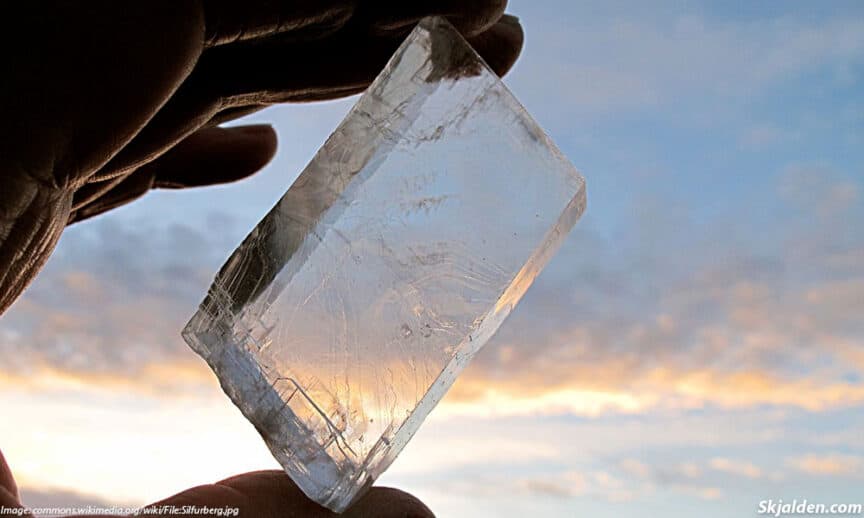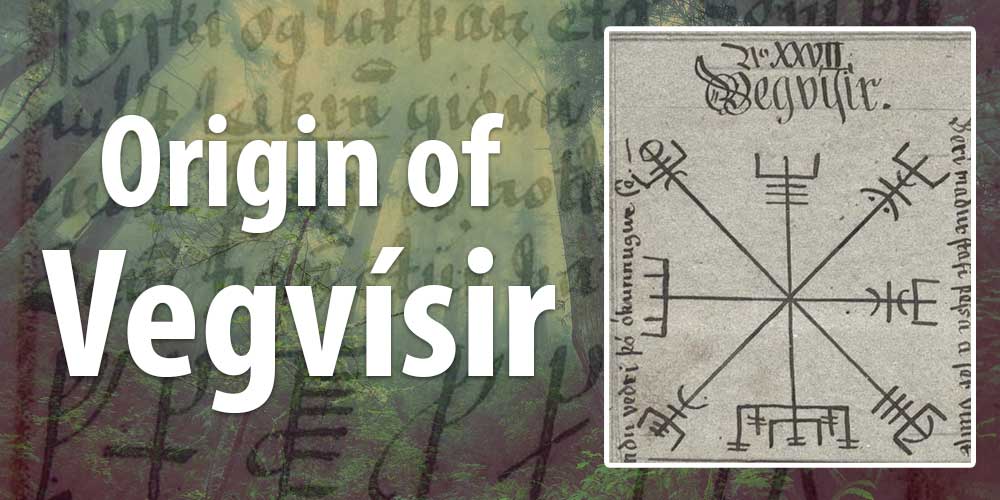Many people have for quite some time been wondering if the Vikings used a sunstone (Icelandic: sólarstein) to navigate the sea. Historians, researchers, and even folks down at the local pub have arm-wrestled this question to exhaustion.
In recent years, has TV series such as the Vikings made people who are not necessarily that much into history aware of these crystals. I think in particular about the scene when Ragnar Lothbrok held up a sunstone to the sky, in an almost religious fashion as if he had discovered the secrets to navigate the seas.
You will also see this trend echoing throughout the many Viking markets in Scandinavia, where merchants often have them for sale at their stalls. Many of these markets have specific rules for what you are allowed to sell, and these rules have in recent years been tightened, but, sunstones are still sold. So if they are still sold, they must have been used during the Viking Age right?
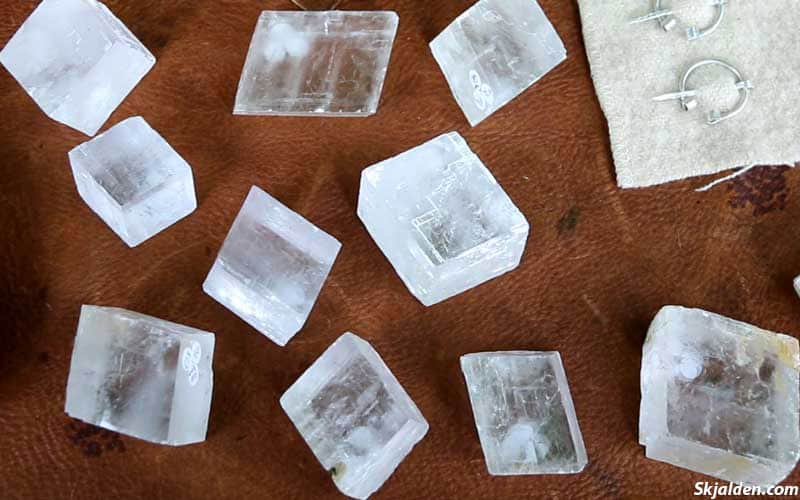
Where can sunstones be found?
Before we dig into the meat of this article, let’s take look at what a sunstone even is. Sunstones are made from calcite, and they have been found across the planet in areas that have high concentrations of basalt, which is formed through the cooling and solidification of magma. Since Iceland is the host of approximately 130 volcanoes, there are some good chances of finding them on this island.
Sunstones are not just white, they can be found in all kinds of colors, but this particular transparent crystal became known throughout Europe as Iceland Spar. This was because they had the biggest mine with the highest quality.
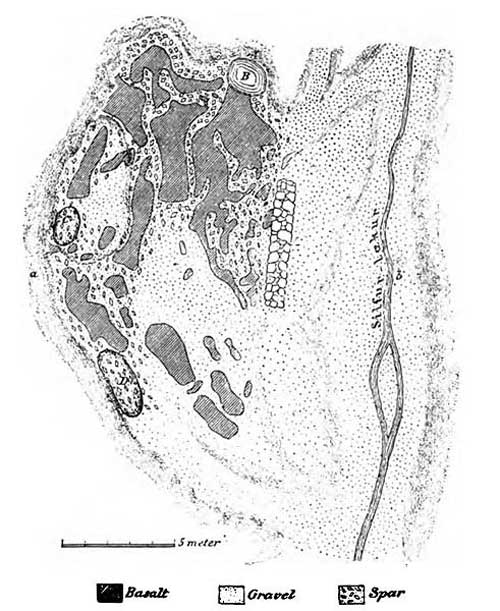
This mine is called the Helgustadir Quarry and it is located in east Iceland.
This mine supplied the whole of Europe with an enormous amount of transparent calcite crystals, from the mid-17th Century until 1975 when the mine was shut down because the remaining deposits were of such poor quality that it was not considered good enough.
To this day, all of the transparent calcite crystals, regardless of origin, are referred to as Iceland Spar.
A question we have to ask ourselves, if the Vikings used a sunstone as navigation, then from where did they get them? Did the first Icelandic settlers find areas where they could extract this crystal or where they were able to walk around and pick them up from the ground? Did they stumble upon them while looking for iron? and did they also find them in the eastern parts of Iceland?
If the Reydarfjördur fjord is or has been in particular rich with transparent calcite crystals, then there could still be some evidence left behind that could prove that it was mined at other locations during the Viking Age.
There has recently been discovered a small settlement in east Iceland. This settlement is believed to have been among the earliest settlements, and archaeological excavations show that it was used for hunting and mining. So we know there was mining activity in this area from the beginning, but if they also mined crystals is so far anyone’s guess.
Was the sunstone used as navigation?
As we say in Danish, I know that I walk like a cat around the hot porridge (Danish: At gå som katten om den varme grød). So has there been found a sunstone from a Viking settlement, or perhaps from a Viking ship? It may come as a surprise to you, but there has actually never been found a single sunstone in connection with a Viking excavation.
The oldest sunstone that could have been used for navigation was found amongst the wreckage of a warship called the Alderney which sank between England and France in 1592. Some archeologists made the assumption that this crystal was used for navigation because it was found about a meter away from another navigation tool, so in other words speculations.
But it is a bit interesting, that a sunstone may have been used by the English fleet, and perhaps it was a descendant from Iceland? Or maybe it was just used as a paperweight? Nobody really knows.
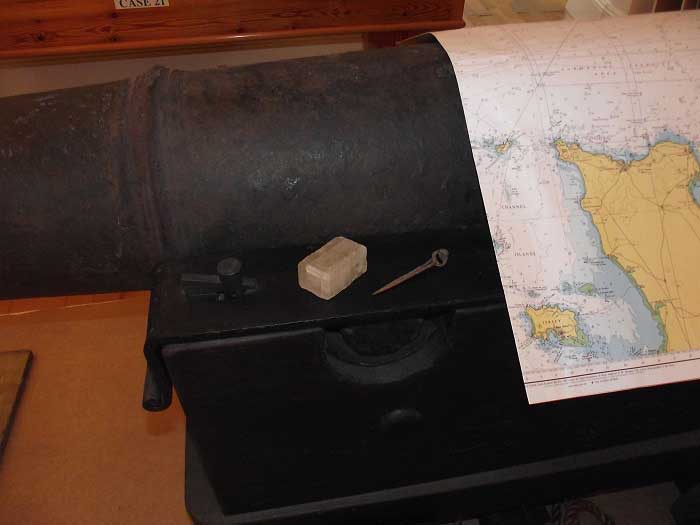
What do the sagas say?
The Icelandic manuscript Rauðúlfs þáttr (Written between the 12th and 13th century) has often been used to prove that the Vikings did use a sunstone as a navigation tool. This manuscript contains a short story from around 1030 CE when the Norwegian king Olav Haraldsson II visited a rich and wise farmer by the name Rauðúlfur.
In this story, late in the night, his son Sigurðr was asked about his attributes. He told the king that he has mastered a skill where he can tell the time of day and night, even if the sky is hidden by clouds.
The weather was thick and snowy as Sigurður had predicted. Then the king summoned Sigurður and Dagur (Rauðúlfur’s sons) to him. The king made people look out and they could nowhere see a clear sky. Then he asked Sigurður to tell where the sun was at that time. He gave a clear assertion. Then the king made them fetch the solar stone and held it up and saw where light radiated from the stone and thus directly verified Sigurður’s prediction. – Rauðúlfs þáttr, Translation by Thorsteinn Vilhjalmsson.
This text could indicate that sunstones were used during the Viking Age, but it is simply not enough to conclude that it was the case, and what are the chances that a King in 1030 would be interested in a sunstone if it was a common tool for navigation? Even if it was not common, and just used by a small segment of the population, wouldn’t a King have heard of it by the end of the Viking Age?
What is so special about Iceland Spar?
If we step out of the Viking Age for just a moment. So we can get an understanding of why this crystal is so special, and why it was sold by the tons to the rest of Europe.
Iceland Spar is a lot more than just a pretty crystal that you can sit and admire in your hand. It has actually been used for hundreds of years and has been studied by people who conducted research within optics. One of these researchers was Sir Isaac Newton, who wrote a book about optics in 1704. In this book, he explained how he observed a ray of white light turn into an array of colors by traveling through a crystal. These colors can then with the use of another crystal be converged into a ray of white light again.
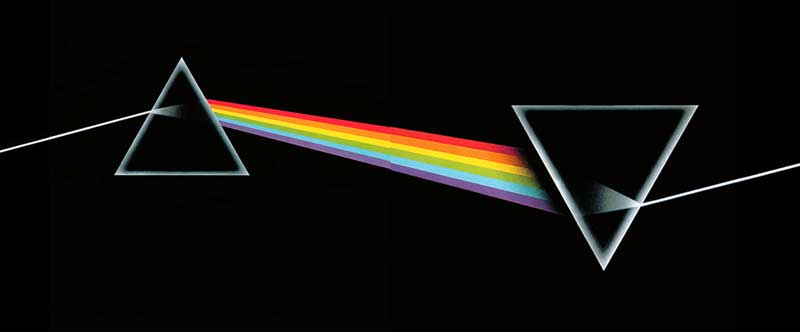
If you are into old-school music, then you have probably seen something like that before on the cover of the album “The Dark Side of the Moon” by Pink Floyd.
This way of bending and reflecting light is called prism, and according to the researchers who studied optics, the best element for this use was Iceland Spar.
You don’t have to be a professor or have any special tools to see how the light behaves, anyone with an Iceland Spar can observe this happening when looking at the crystal.
If you have seen a rainbow, then you have already observed the bending of light, because when sunlight hits a rain droplet, some of the light is slowed down and reflected.
Just like through a crystal, the colors on a rainbow are always in order of their wavelength, from longest to shortest: red, orange, yellow, green, blue, and violet.
How to use a sunstone
It is pretty simple to find the sun with a sunstone, but I will explain it anyway.
When you are looking through a sunstone you are not looking for colors, but for shadows. If you draw a dot on the top of the crystal and look through it from below, then two dots will appear. If you then hold the crystal up to the sky and rotate the crystal until the two dots have exactly the same intensity or darkness. At that angle, the upward-facing surface indicates the direction of the sun.
There is no doubt, that a sunstone can be used to locate the sun. This method with a dot has been tested, and it was possible to find the location of the sun within one degree, even on cloudy days, or under dark twilight conditions when the sun was just 4 degrees above the horizon.
Iceland Spar in modern technologies
It is a bit ironic that Iceland Spar has been considered a method of navigation during the Viking Age when we take into consideration how important this crystal has been in the advancement of science.
The attributes of the sunstone have not only been studied by famous researchers such as Rasmus Bartholin, Sir Isaac Newton, and William Nicol of Edinburgh but it has actually also been used in an array of modern technologies.
Polariscopes, polarimeters, photometers, petrographic microscopes, and a gunsight to shoot down German planes in WWII are all examples of technologies that have used Iceland Spar.
Academic research
Speculations, theories, excavations, and stories from a thousand years ago are all valid sources to bring into this discussion. But, is there not someone who actually tested the sunstone theory, in a proper manner within an academic framework? Yes, there are.
A study was conducted by Gábor Horváth and Dénes Száz at Eötvös Loránd University in Budapest. Their research concluded that not only could a sunstone have been a possibility, but it may, in fact, have been the method they used to reach Greenland.
The research was conducted with the use of computer simulations, based on the theory that the Vikings used Bergen in Norway as a starting point to sail to their settlement in the south of Greenland. The study conducted thousands of computer simulations along the 60°21 55 N latitude.
The Viking voyages were simulated for two specific dates, spring equinox (21 March) and summer solstice (21 June). The solar elevation angles were calculated for the latitude on an hourly basis.
The speed of the Viking ships was set to 11 km an hour. The Vikings used different types of ships with different maximal velocities, and, therefore, they chose to select an average speed of an average-sized ship with a mast of 21 meters in height. This means that the trip would have taken approximately 3 weeks to complete.
Figure 1 shows two extreme cases of 1000 simulated Viking voyages from Bergen (Norway) to Greenland at spring equinox if a sunstone is used to analyze sky polarization.
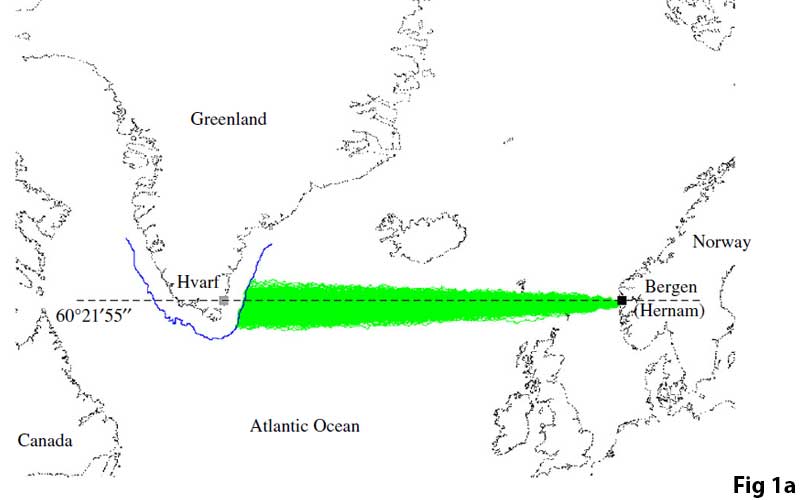
Figure 1a shows the simulated result of using a sunstone every 1 hour while sailing west, all of the green lines are trips that would have been successful.
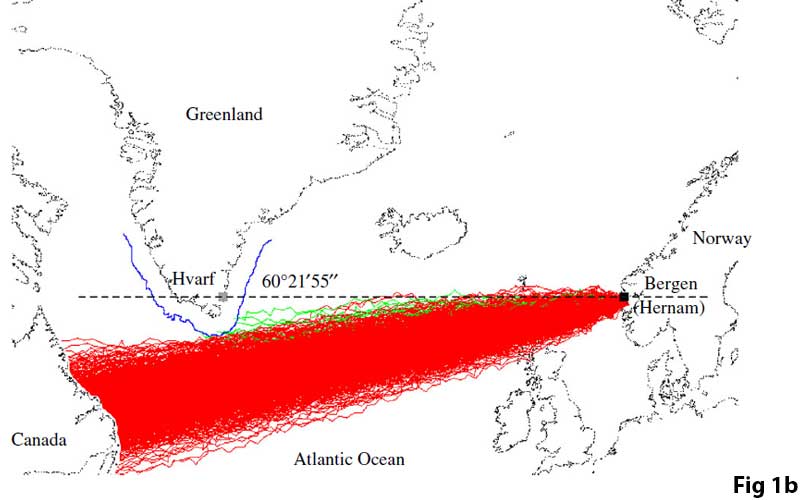
Figure 1b shows the simulated result of using a sunstone every 6 hours, only 9 out of 1000 were successful in reaching Greenland.
If the sunstone was used every 1 to 3 hours at spring equinox and summer solstice, then there would be a success rate between 92.2% to 100% to arrive at their destination in Greenland. However, if the sunstone was used every 4 hours, then there would only be a 32.1% to 58.7% chance that the voyages would be successful.
If the sunstone was used every 5 hours, then the chances of success would drop to below 4% at summer solstice, but surprisingly, at spring equinox the chances of success were approximately 100%. If the sunstone was used every 6 hours then the success rate drops to 3.0–6.1% at spring equinox and 0.9–1.9% at summer solstice.
Based on these results, the researchers concluded that the use of sunstones for navigation is surprisingly successful at spring equinox and summer solstice even in cloudy weather if the navigator uses it at least once every 3 hours.
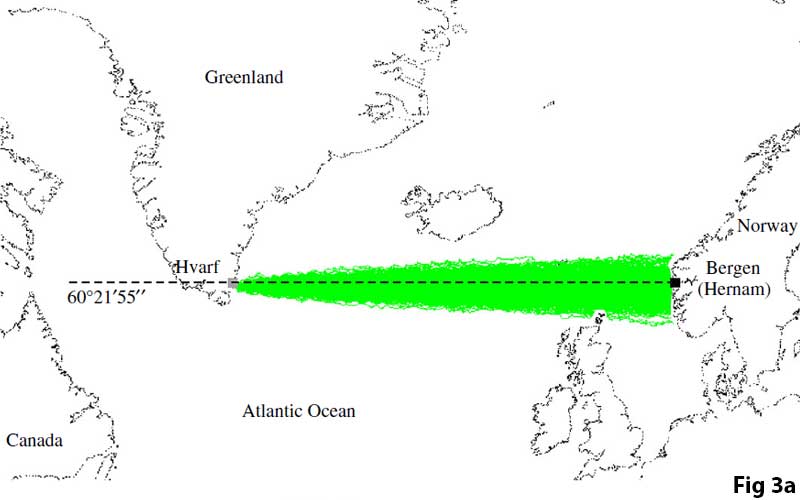
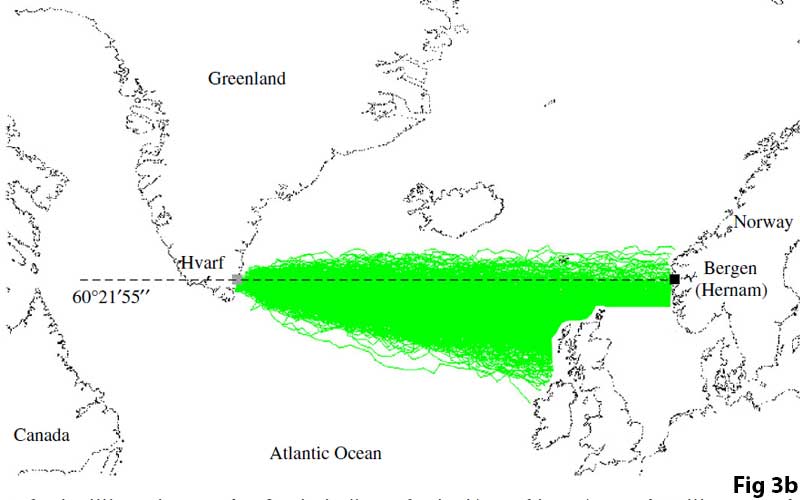
Figure 3 shows 1000 simulated Viking sailing routes from Hvarf (Greenland) to Norway at spring equinox if a sunstone is used every 1 to 6 hours. All of these voyages are successful because they make landfall somewhere on the coasts of Europe. This means that if the sailors had enough food and water, and did not sink, then they would most likely be able to return every single time.
According to the researchers, it was important to use the sunstone an equal number of times during the morning and afternoon. The morning readings could result in the ship steering too far north, and afternoon readings could cause it to sail too far southward, which could result in missing Greenland and ending up on the coast of North America.
These computer simulations made me think that it must have taken a lot of courage to sail all the way to Greenland. Imagine sailing on the open sea for 3 to 4 weeks, while quite literally being at the mercy of the weather. The people who were experienced navigators, and knew how to navigate long distances, would probably have been held in high respect by their companions.
We will probably never hear the stories of those who failed their trip by missing their destination, but there might be a skeleton sitting in a shipwreck somewhere in the depths of the Atlantic Ocean, holding onto one of these sunstones while waiting to join the skeleton army at Ragnarök. Because one thing is for certain, a navigator who is unable to find his or her way was probably not worthy of Valhalla.
My conclusion is, if you believe that the Vikings could have used the sunstone as a method of navigation, then you are free to do so, I don’t think it is silly to think so after conducting this research. Especially with the academic research that has been conducted within this field, and when I consider that the computer simulations have proven that it would have been possible to sail from Bergen and to the settlement in southern Greenland.
However, it is a problem that there is no concrete evidence, so for me, this will just be a theory, until we find sunstones in the vicinity of a Viking ship at multiple excavations. The reason why I say multiple, is because a sunstone does not prove anything if only found once because it could just have been seen as a pretty crystal.
I think that it is a problem that most people were cremated, and they may very well have been sent to Valhalla with their most precious belongings which in the case of a sailor could have been his navigation tools, such as a sunstone. But since we find new pieces of jewelry and other objects of interest on nearly a yearly basis, then it is still possible that this mystery will be solved one day, but that day has yet to come.
Sources:
Iceland spar from Iceland: a key to the nature of light and its interactions with matter – Leó Kristjánsson, Emeritus research professor University of Iceland, 2015.
Száz D, Horváth G. 2018 Success of sky-polarimetric Viking navigation: revealing the chance Viking sailors could reach Greenland from Norway.R. Soc. open sci. 5: 172187. http://dx.doi.org/10.1098/rsos.172187
LEÓ KRISTJÁNSSON INSTITUTE OF EARTH SCIENCES SCIENCE INSTITUTE UNIVERSITY OF ICELAND Fourth edition, September 2015 – ICELAND SPAR AND ITS INFLUENCE ON THE DEVELOPMENT OF SCIENCE AND TECHNOLOGY IN THE PERIOD 1780 – 1930
